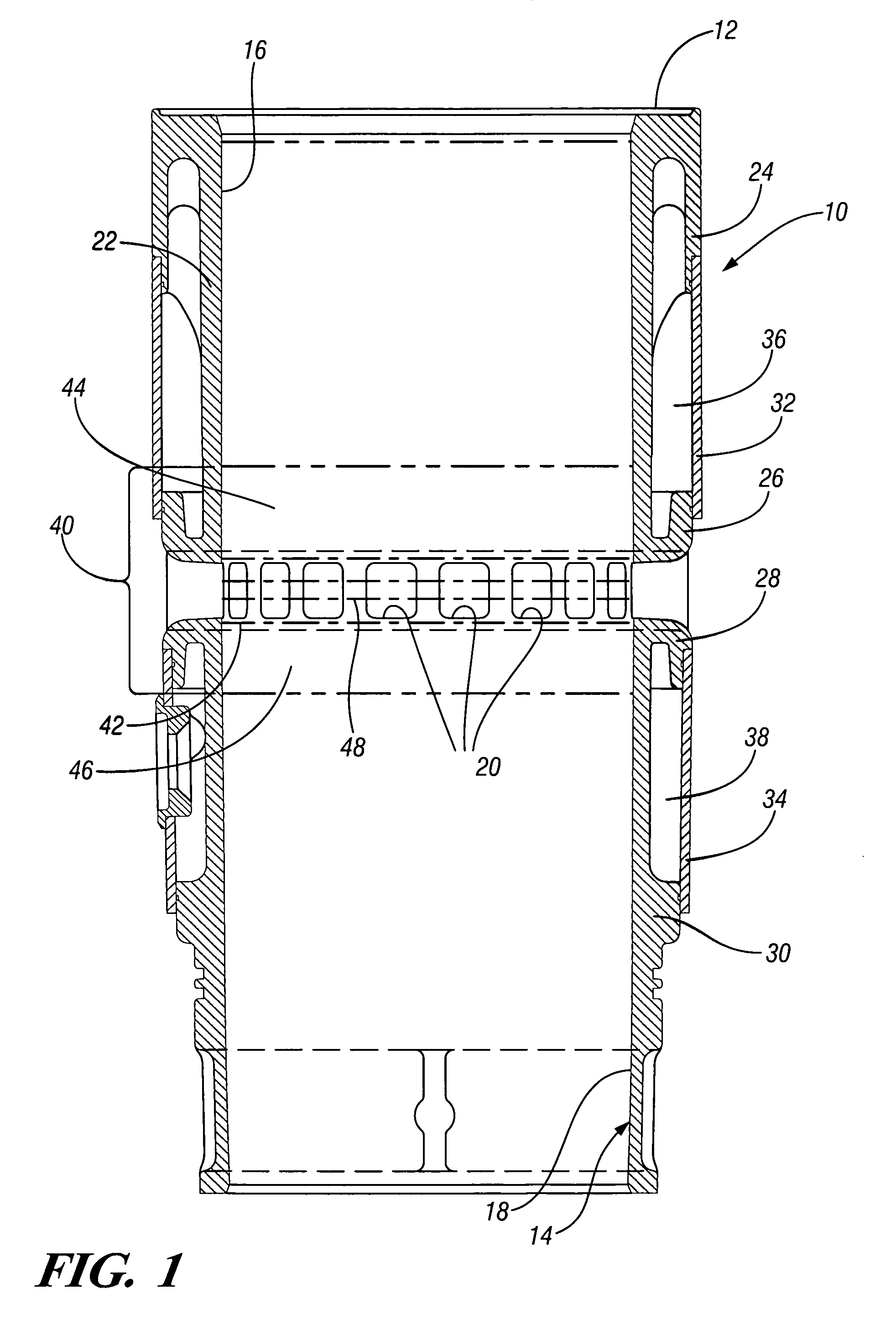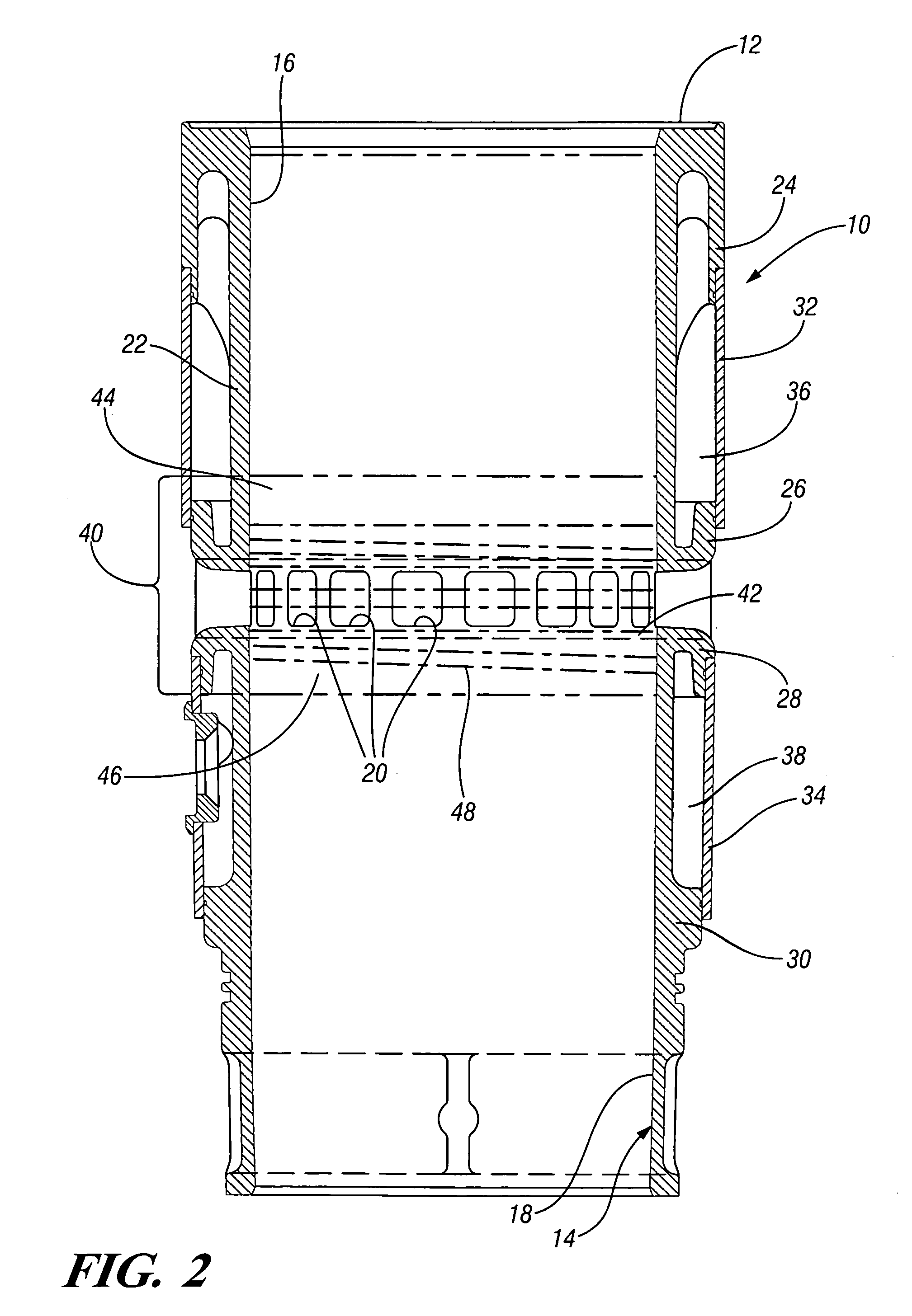Ported engine cylinder liner with selectively laser-hardened and induction-hardened bore
a technology of induction hardening and engine cylinders, which is applied in the field of selective hardening of engine cylinder bores, can solve the problems of inconsistencies in the quality of heated surfaces, the method is not generally desired, and the cost and time-consuming of laser hardening methods, so as to achieve efficient supply
- Summary
- Abstract
- Description
- Claims
- Application Information
AI Technical Summary
Benefits of technology
Problems solved by technology
Method used
Image
Examples
Embodiment Construction
[0016]Referring now to FIG. 1 of the drawings in detail, numeral 10 generally indicates a removable cylinder liner of a type used in certain well-known two-cycle diesel engines that are used in numerous applications, including the propulsion of railway locomotives, except for the cylinder bore hardening process, which will be subsequently described. The liner 10 includes a generally cylindrical cast iron body 12 defining internally an elongated generally cylindrical bore 14 having upper and lower bore portions 16, 18, respectively, separated intermediate the ends by an annular row of generally rectangularly spaced air inlet ports 20.
[0017]The liner body 12 includes a generally cylindrical inner wall 22, defining the cylinder bore 14 and a plurality of flanges 24, 26, 28, 30 which extend outwardly from the inner wall and upwardly or downwardly to receive upper and lower closure sleeves 32, 34. The sleeves are brazed to the flanges and cooperate therewith to define upper and lower ann...
PUM
| Property | Measurement | Unit |
|---|---|---|
| inner diameter | aaaaa | aaaaa |
| temperature | aaaaa | aaaaa |
| area | aaaaa | aaaaa |
Abstract
Description
Claims
Application Information
 Login to View More
Login to View More - R&D
- Intellectual Property
- Life Sciences
- Materials
- Tech Scout
- Unparalleled Data Quality
- Higher Quality Content
- 60% Fewer Hallucinations
Browse by: Latest US Patents, China's latest patents, Technical Efficacy Thesaurus, Application Domain, Technology Topic, Popular Technical Reports.
© 2025 PatSnap. All rights reserved.Legal|Privacy policy|Modern Slavery Act Transparency Statement|Sitemap|About US| Contact US: help@patsnap.com



